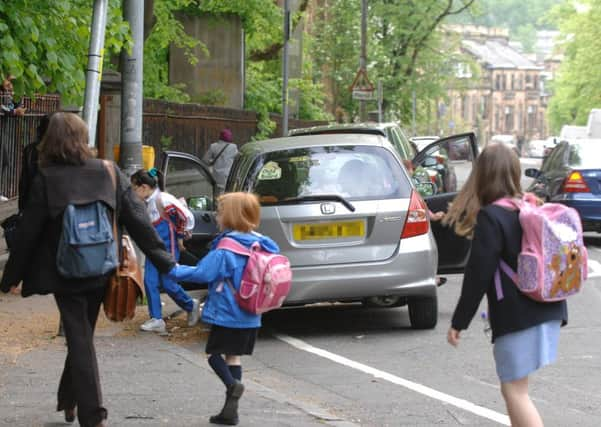Alastair Dalton: Park-and-stride could fix school-run congestion


What could be a unique opportunity to transform the notorious school run presents itself in Glasgow next month.
The only one of nearly 140 primary schools in the city to be split between two sites is to be consolidated in a single new building. It sounds like a potential Carmageddon.
Advertisement
Hide AdAdvertisement
Hide AdThe school is in Broomhill, an area of the west end where there is major demand for parking, with tenements opposite the playground.
For the first time, the community is facing the prospect of more than 450 pupils converging on the same site in time for the 9am bell.
Unless nothing is done, there is the potential for traffic congestion, and with it the associated risks of increased road-safety problems and health-threatening vehicle emissions.
That is already the daily nightmare faced by many parents across Scotland as they get their children to school – and I bet most wish it was different.
In Broomhill, there is now a chance to prevent that happening, but more than that, to provide a shining example to the rest of the country of how to give the school run a better name.
The school’s parent council has just issued a letter to parents warning them that congestion around the new school is “highly likely”.
But it pointed out that the problem could be overcome by pupils walking, cycling, scooting or skating to school instead of being driven, with the additional benefit that such “active” travel would “help make them more alert and ready to learn”.
The parent council acknowledged some pupils would still need to be driven to school, but suggested parents adopt a “park-and-stride” approach, where children make the last part of their journey on foot. As well as being desirable for getting to school, the big picture is that it teaches youngsters life lessons about fitness at a time when many are spending longer immobile in front of screens, if not being driven around.
Advertisement
Hide AdAdvertisement
Hide AdFor this to happen will be the responsibility of both parents and the city council.
While the school should encourage parents by highlighting the benefits to pupils, this is a golden opportunity for the city council to capitalise on its pioneering work on school road safety.
It was the first to criminalise parking on zig-zag lines protecting playground entrances, but has failed to follow this through in some areas by not erecting the signs needed for drivers to be prosecuted – or putting them up so high as to be hardly visible and so of little deterrent value.
Glasgow has yet to follow the example of councils such as East Lothian and Edinburgh in creating traffic-free zones around schools.
But there is plenty it could do short of vehicle prohibition, such as acting on calls for a drop-off zone far enough away to keep extra traffic from the immediate vicinity of the school while still making it readily accessible to pupils with the help of lollypop patrollers for crossing roads in between.
In Broomhill, there will be a new one-way road system on one side of the school, but this appears to be more about keeping traffic moving rather than keeping down the number of vehicles in the area.
The council has established a new road safety group to adopt a holistic approach, involving officials from a range of departments such as engineering as well as education.
Broomhill should be its first success story – so much so that other traffic-choked schools in the city and across Scotland beat a path there, eager to find out what they can do to follow suit.